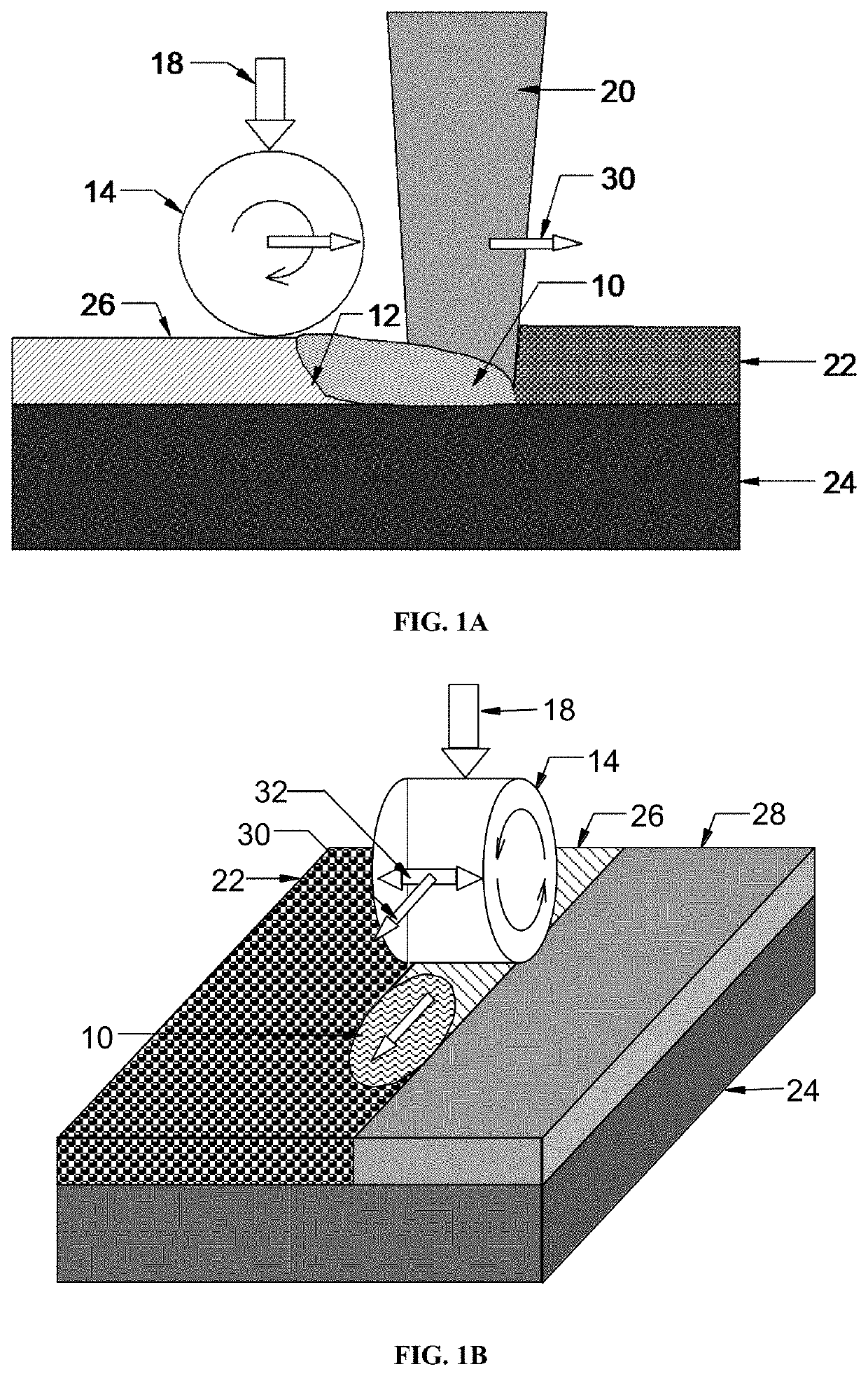Methods of ultrasound assisted 3D printing and welding
a technology of 3d printing and ultrasound, applied in the field of 3d printing and welding, can solve the problems of large number of alloys that cannot be 3d printed, similar defects also occur during the welding process, and achieve the effect of reducing hot tearing and porosity formation
- Summary
- Abstract
- Description
- Claims
- Application Information
AI Technical Summary
Benefits of technology
Problems solved by technology
Method used
Image
Examples
example
[0034]The inventor of the present invention and Dr. S. Bagherzadeh have validated the approach shown in FIG. 4 for eliminating hot tearing, porosity, and delamination on a Pb-20% Sn alloy using a sonotrode with a hemispherical tip. The sonotrode was bolt connected to an ultrasonic horn made of Ti-6A1-4V. The horn was driven by a 1.5 kW acoustic generator and an air-cooled 20 kHz transducer made of piezoelectric lead zirconate titanate (PZT) crystals. A Ronson Tech torch was used as the heat source. Ultrasonic systems employing higher frequencies of 40 kHz to 60 kHz with lower amplitude vibrations are preferably used for materials less ductile.
[0035]FIG. 5 shows the Pb—Sn phase diagram. Pb-20% Sn alloy has the largest solidification interval on the phase diagram. It is well known that alloys that have large solidification interval are difficult to weld and print due to hot tearing and porosity formation.
[0036]FIG. 6A shows the columnar grains formed in the melt pool in the sample wit...
PUM
| Property | Measurement | Unit |
|---|---|---|
| Power | aaaaa | aaaaa |
| Power | aaaaa | aaaaa |
| Frequency | aaaaa | aaaaa |
Abstract
Description
Claims
Application Information
 Login to View More
Login to View More - R&D
- Intellectual Property
- Life Sciences
- Materials
- Tech Scout
- Unparalleled Data Quality
- Higher Quality Content
- 60% Fewer Hallucinations
Browse by: Latest US Patents, China's latest patents, Technical Efficacy Thesaurus, Application Domain, Technology Topic, Popular Technical Reports.
© 2025 PatSnap. All rights reserved.Legal|Privacy policy|Modern Slavery Act Transparency Statement|Sitemap|About US| Contact US: help@patsnap.com



